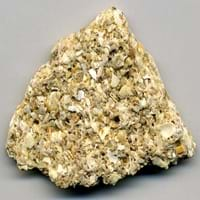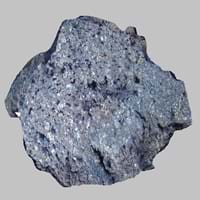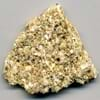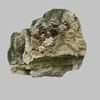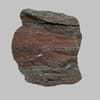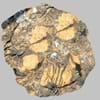Coquina and Mugearite
Definition
Definition
Coquina is a sedimentary rock that is composed either wholly or almost entirely of the transported, abraded, and mechanically-sorted fragments of the shells of molluscs, trilobites, brachiopods, or other invertebrates
Mugearite is a type of oligoclase bearing basalt, also comprising of olivine, apatite, and opaque oxides
History
Origin
European Foreland Basins
Skye, Scotland
Discoverer
Unknown
Alfred Harker
Etymology
From Concha (Latin)+ Coquina(Spanish) +conch(English)= Couquina (mid 19th century)
From mugear + -ite
Class
Sedimentary Rocks
Igneous Rocks
Sub-Class
Durable Rock, Soft Rock
Durable Rock, Medium Hardness Rock
Family
Group
Not Applicable
Volcanic
Other Categories
Coarse Grained Rock, Opaque Rock
Opaque Rock
Texture
Texture
Clastic
Glassy, Massive, Porphyritic, Scoriaceous, Vesicular
Color
Beige, Buff, Orange
Black, Brown, Light to Dark Grey
Maintenance
More
Less
Durability
Non-Durable
Durable
Water Resistant
No
Yes
Scratch Resistant
No
Yes
Stain Resistant
No
Yes
Wind Resistant
No
No
Acid Resistant
No
No
Appearance
Layered, Banded, Veined and Shiny
Dull and Soft
Uses
Architecture
Interior Uses
Decorative Aggregates, Homes, Hotels, Interior Decoration
Floor Tiles, Flooring, Homes, Hotels
Exterior Uses
Garden Decoration, Office Buildings
As Building Stone, Garden Decoration
Other Architectural Uses
Curbing
Curbing
Industry
Construction Industry
Building houses or walls, Construction Aggregate
As Dimension Stone, Cobblestones, Rail Track Ballast, Roadstone
Medical Industry
Not Yet Used
Not Yet Used
Antiquity Uses
Artifacts, Monuments, Sculpture, Small Figurines
Artifacts, Monuments, Sculpture
Other Uses
Commercial Uses
Creating Artwork
Creating Artwork
Types
Types
Not Available
Alkaline Basalt, Boninite, High Alumina Basalt, Mid Ocean Ridge Basalt (MORB), Tholeiitic Basalt, Basaltic trachyandesite, Mugearite and Shoshonite
Features
Available in Lots of Colors and Patterns, Is one of the oldest rock
Has High structural resistance against erosion and climate, Very fine grained rock
Archaeological Significance
Monuments
Used
Used
Famous Monuments
Data Not Available
Data Not Available
Sculpture
Used
Used
Famous Sculptures
Data Not Available
Data Not Available
Pictographs
Used
Used
Petroglyphs
Used
Used
Figurines
Used
Used
Fossils
Present
Absent
Formation
Formation
Coquina is a sedimentary rock which is formed when billions of small clam-like seashell, called Coquina, or cockleshell are die and hence are deposited, buried and turns into a rock when pressure is applied.
Mugearite forms when lava reaches the Earth's surface near an active volcano. The temperature of lava is between 1100 to 1250° C when it gets to the surface.
Composition
Mineral Content
Apatite, Augite, Bronzite, Calcite, Chert, Chlorite, Clay Minerals, Epidote, Feldspar, Garnet, Micas, Muscovite or Illite
Olivine, Plagioclase, Pyroxene
Compound Content
CaO, Carbon Dioxide, Iron(III) Oxide, MgO
Aluminium Oxide, CaO, Iron(III) Oxide, FeO, Potassium Oxide, MgO, MnO, Sodium Oxide, Phosphorus Pentoxide, Silicon Dioxide, Titanium Dioxide
Transformation
Metamorphism
No
Yes
Types of Metamorphism
Not Applicable
Burial Metamorphism, Impact Metamorphism
Weathering
Yes
Yes
Types of Weathering
Biological Weathering, Chemical Weathering, Mechanical Weathering
Biological Weathering, Chemical Weathering
Erosion
Yes
No
Types of Erosion
Coastal Erosion, Sea Erosion, Water Erosion, Wind Erosion
Not Applicable
Properties
Physical Properties
Hardness
1-2
6
Grain Size
Coarse Grained
Not Applicable
Fracture
Irregular
Conchoidal
Streak
White
White to Grey
Porosity
Highly Porous
Less Porous
Luster
Dull to Vitreous to Submetallic
Not Available
Compressive Strength
Not Available
37.50 N/mm2
27
Cleavage
Not Available
Not Applicable
Toughness
Not Available
2.3
Specific Gravity
1.10-2.24
2.8-3
Transparency
Opaque
Opaque
Density
2.8-2.9 g/cm3
2.9-3.1 g/cm3
Thermal Properties
Specific Heat Capacity
Not Available
0.84 kJ/Kg K
15
Resistance
Heat Resistant, Impact Resistant, Pressure Resistant, Wear Resistant
Heat Resistant, Pressure Resistant, Wear Resistant
Reserves
Deposits in Eastern Continents
Asia
Not Yet Found
India, Russia
Africa
Not Yet Found
South Africa
Europe
United Kingdom
Iceland
Others
Not Yet Found
Not Yet Found
Deposits in Western Continents
North America
USA
Canada, USA
South America
Not Yet Found
Brazil
Deposits in Oceania Continent
Australia
Not Yet Found
Not Yet Found
All about Coquina and Mugearite Properties
Know all about Coquina and Mugearite properties here. All properties of rocks are important as they define the type of rock and its application. Coquina belongs to Sedimentary Rocks while Mugearite belongs to Igneous Rocks.Texture of Coquina is Clastic whereas that of Mugearite is Glassy, Massive, Porphyritic, Scoriaceous, Vesicular. Coquina appears Layered, Banded, Veined and Shiny and Mugearite appears Dull and Soft. The luster of Coquina is dull to vitreous to submetallic while that of Mugearite is not available. Coquina is available in beige, buff, orange colors whereas Mugearite is available in black, brown, light to dark grey colors. The commercial uses of Coquina and Mugearite are creating artwork.
|
||
|
||
|
